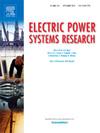Transient and steady currents in a parallel RL circuit
IF 3.3
3区 工程技术
Q2 ENGINEERING, ELECTRICAL & ELECTRONIC
引用次数: 0
Abstract
Part of electrical engineering is circuit theory, which includes methods for calculating steady and transient currents in a parallel RL circuit. Power systems are typically inductive and can be modelled with RL circuits. The proposed methods can be used in the calculation of short-circuit currents and in the calculation of current density in solid conductors that form transmission lines. An RL circuit is formed by real voltage sources, inductors and resistors. The inductance and resistance of the circuit elements do not depend on time. The ideal voltage source, which is part of the real source, has voltage depending on time. Currents in a parallel RL circuit are solutions to ordinary differential and algebraic equations, which are mathematical expressions of Kirchhoff’s laws. The original contribution of this paper is the derivation of equations for the calculation of currents in a circuit for all possible combinations of circuit elements. The importance of the initial conditions of currents whose first derivative occurs in the equations is emphasized. An original definition of steady current and transient current is proposed. The theory is supplemented with solutions of illustrative examples.
求助全文
约1分钟内获得全文
求助全文
来源期刊

Electric Power Systems Research
工程技术-工程:电子与电气
CiteScore
7.50
自引率
17.90%
发文量
963
审稿时长
3.8 months
期刊介绍:
Electric Power Systems Research is an international medium for the publication of original papers concerned with the generation, transmission, distribution and utilization of electrical energy. The journal aims at presenting important results of work in this field, whether in the form of applied research, development of new procedures or components, orginal application of existing knowledge or new designapproaches. The scope of Electric Power Systems Research is broad, encompassing all aspects of electric power systems. The following list of topics is not intended to be exhaustive, but rather to indicate topics that fall within the journal purview.
• Generation techniques ranging from advances in conventional electromechanical methods, through nuclear power generation, to renewable energy generation.
• Transmission, spanning the broad area from UHV (ac and dc) to network operation and protection, line routing and design.
• Substation work: equipment design, protection and control systems.
• Distribution techniques, equipment development, and smart grids.
• The utilization area from energy efficiency to distributed load levelling techniques.
• Systems studies including control techniques, planning, optimization methods, stability, security assessment and insulation coordination.
 求助内容:
求助内容: 应助结果提醒方式:
应助结果提醒方式:


